We'd love to hear from you. Simply fill in the form below or reach out directly.
- +27(0)71 607 9279
- [email protected]
- District of Philippolis, Free State
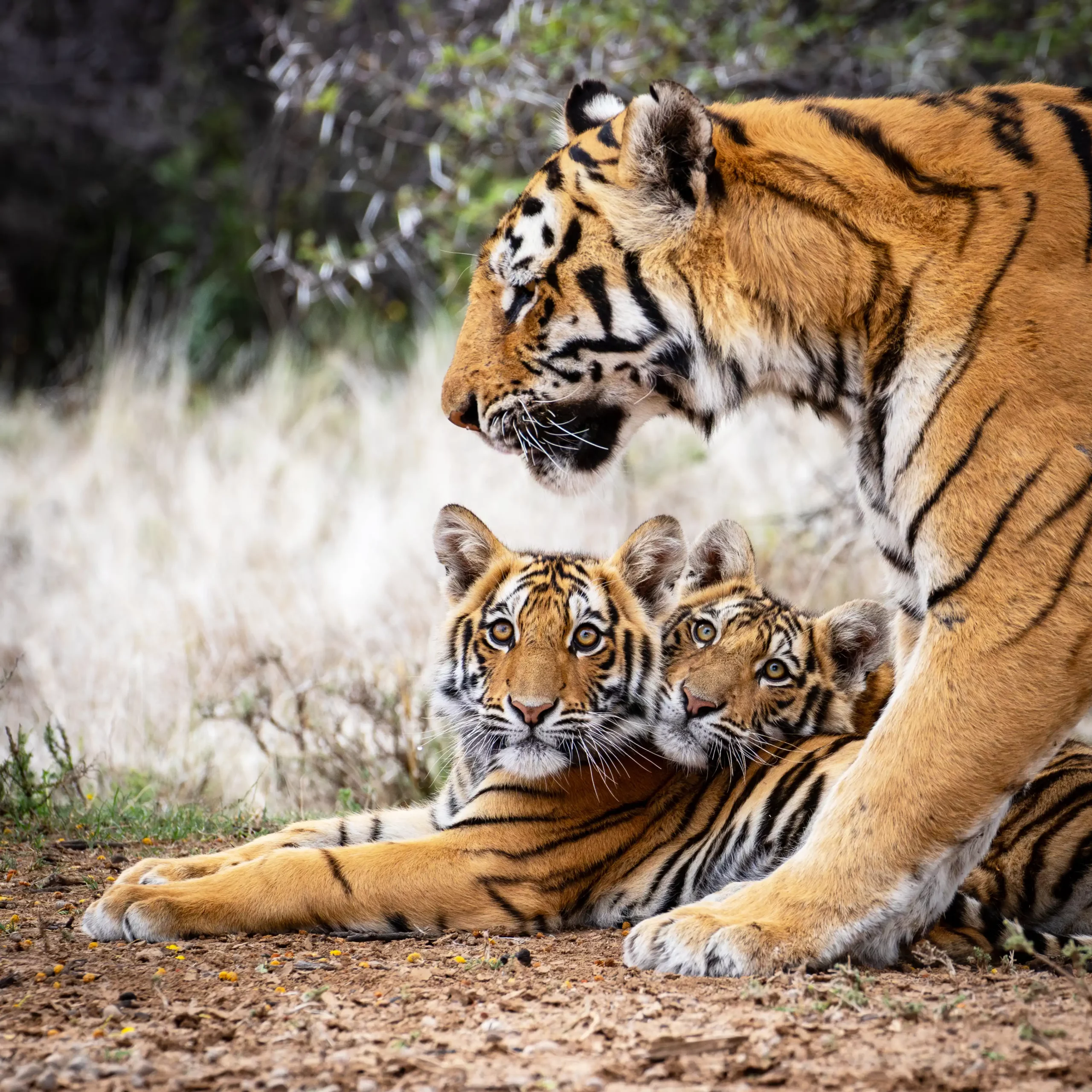
Travel Information
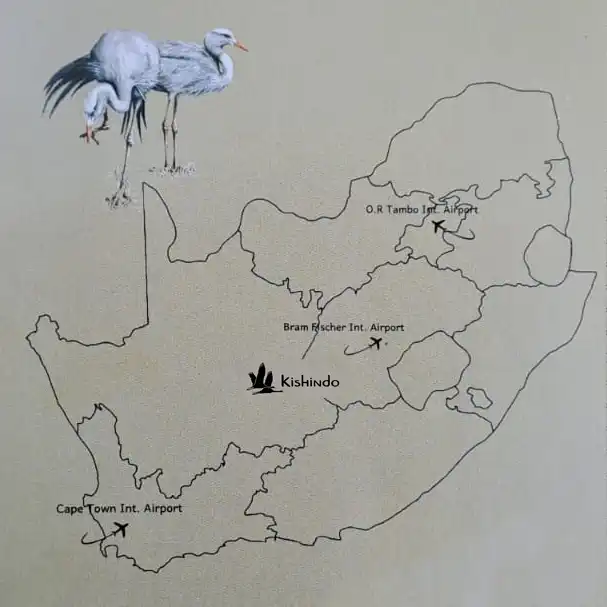
Map of South Africa showing the airports and the location of Kishindo
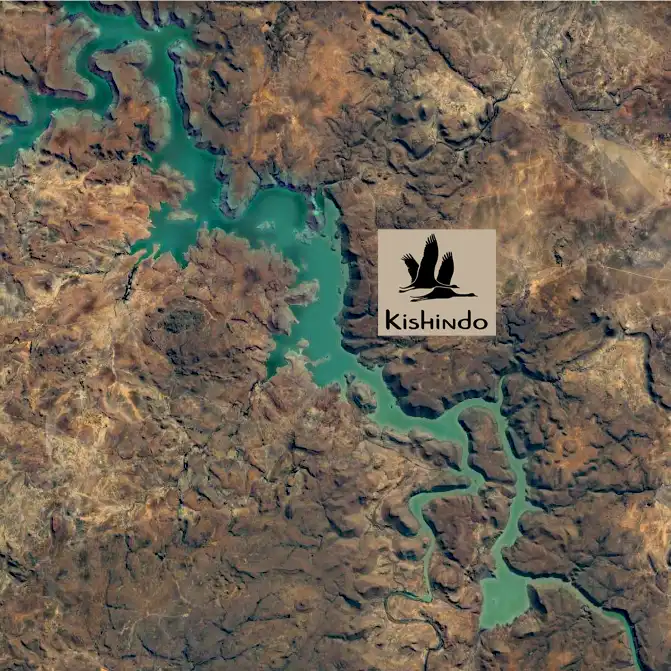
A Google map of Vanderkloof dam & the location of Kishindo
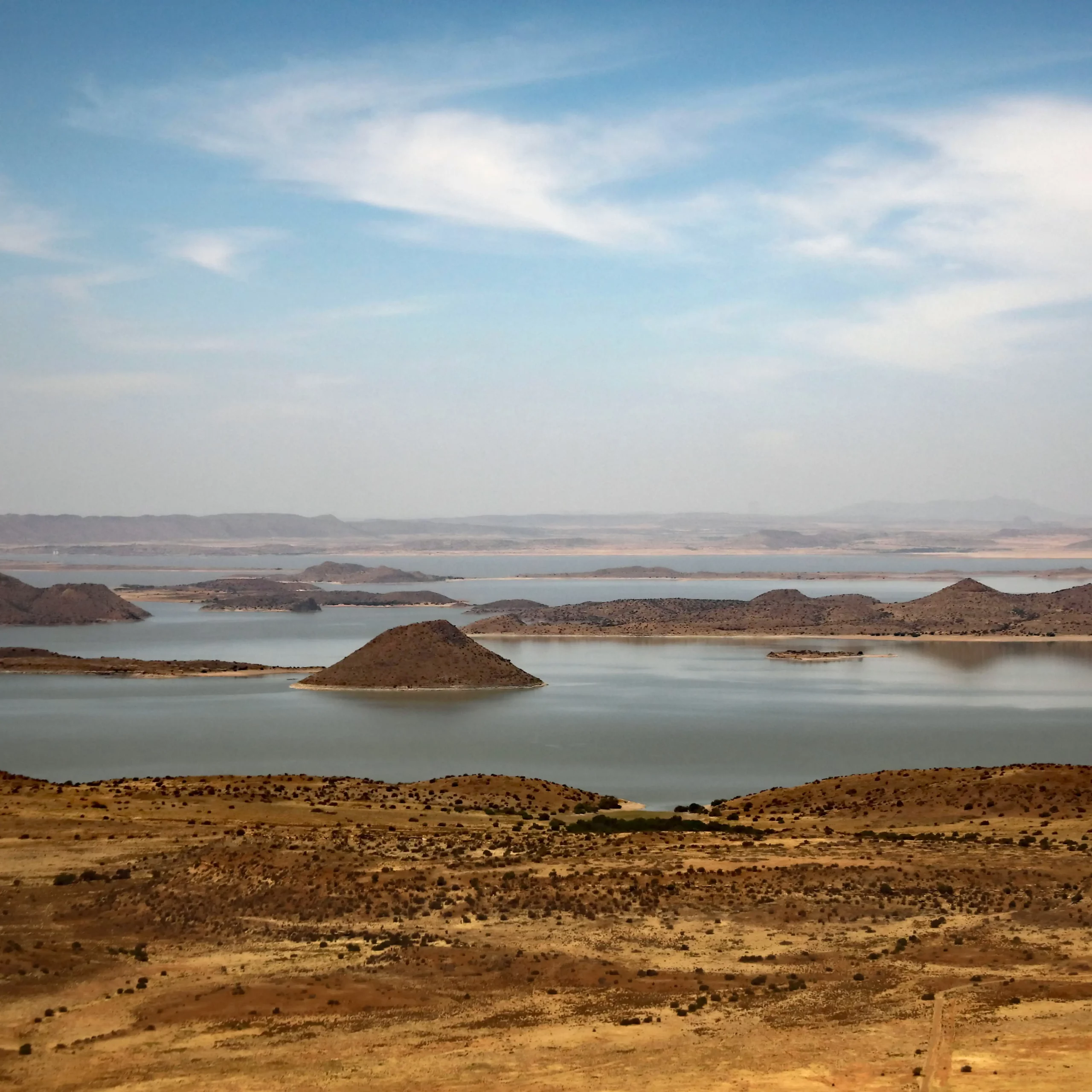
Flying over Gariep Dam
Directions
By Air
Both Commercial or private charter flights are available for your trip.
All commercial flights from Johannesburg or Cape Town land in Bloemfontein at Bram Fischer Airport. It is a 2½ hour drive from Bloemfontein to Kishindo.
Kishindo has a preferred list of shuttle services, or car hire agents available in Bloemfontein.
All charter flights depart from ether Johannesburg or Cape Town and land land at the Gariep airstrip, which is 1 hour drive from Kishindo. A Kishindo vehicle will collect you from the Gariep airport.
Cape Town to Bloemfontein is approximately is a 1½ hour flight.
Johannesburg to Bloemfontein is approximately is a 1 hour flight.
Please contact us for further information.
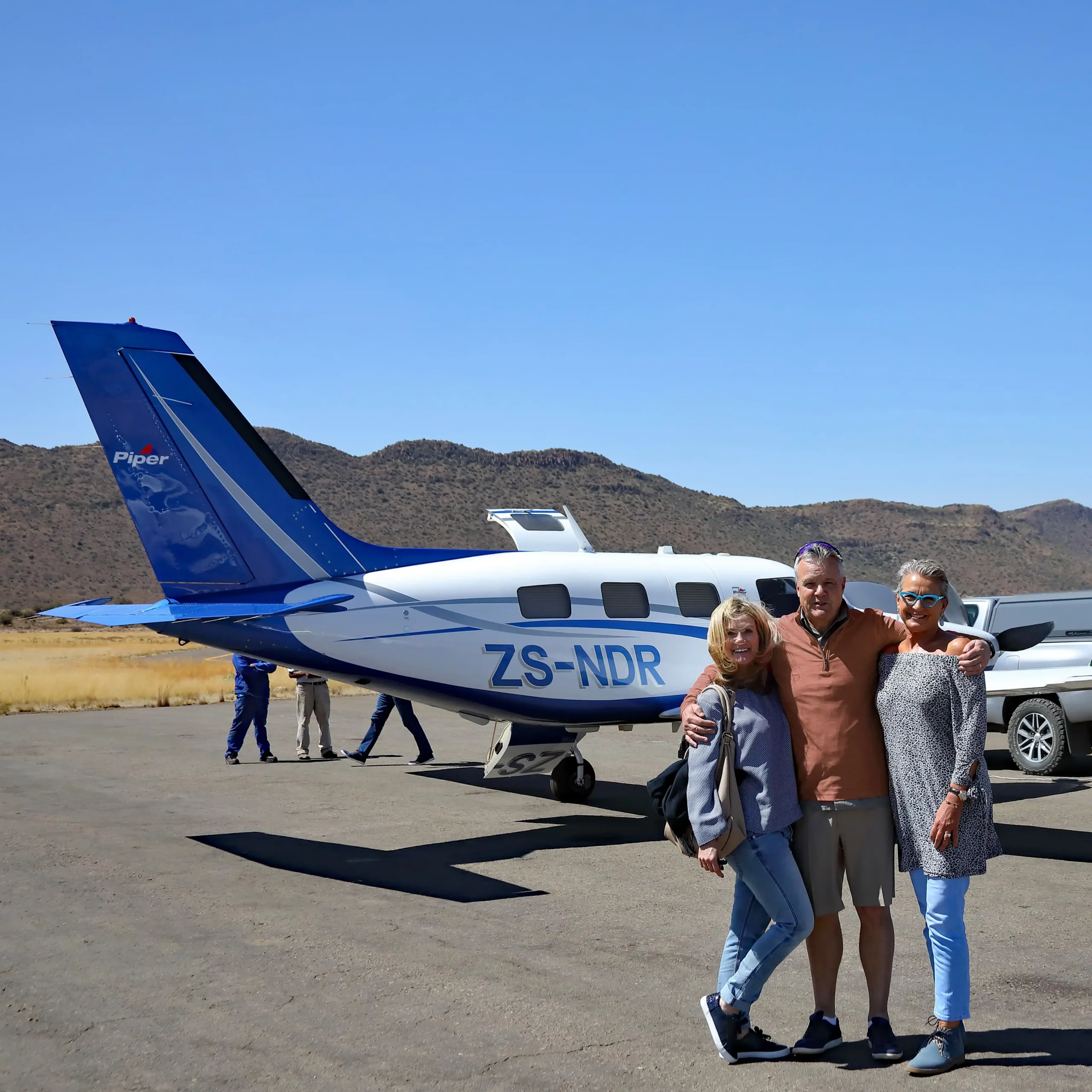
Directions
By Road
We can arrange transfers from Bloemfontein, or you can self-drive.
From Bloemfontein: approximately a 2½ hour drive (±200km).
From Port Elizabeth: approximately a 6 hour drive (±500km).
From Johannesburg: approximately a 6½ hour drive (± 600km).
From Cape Town: approximately a 10 hour drive (± 900km).
Please note for self-drive the 25Km road from Philippolis to Kishindo is a dirt road. During rare heavy rains guests will be collected from Philippolis.
Please contact us for further information.
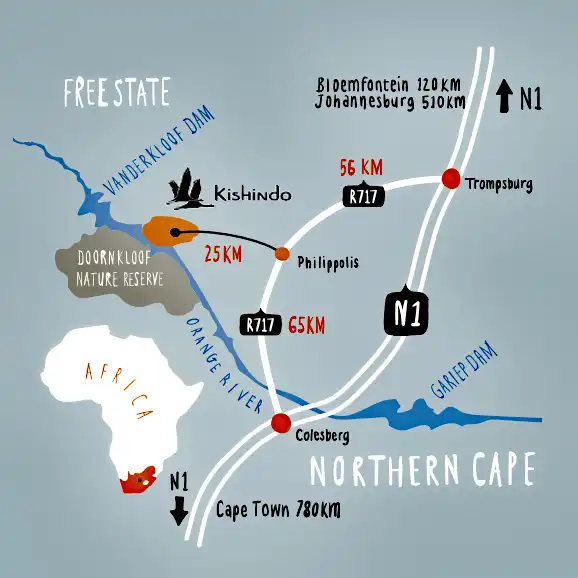
“Afoot and light-hearted I take to the open road, healthy, free, the world before me.”
Walt Whitman
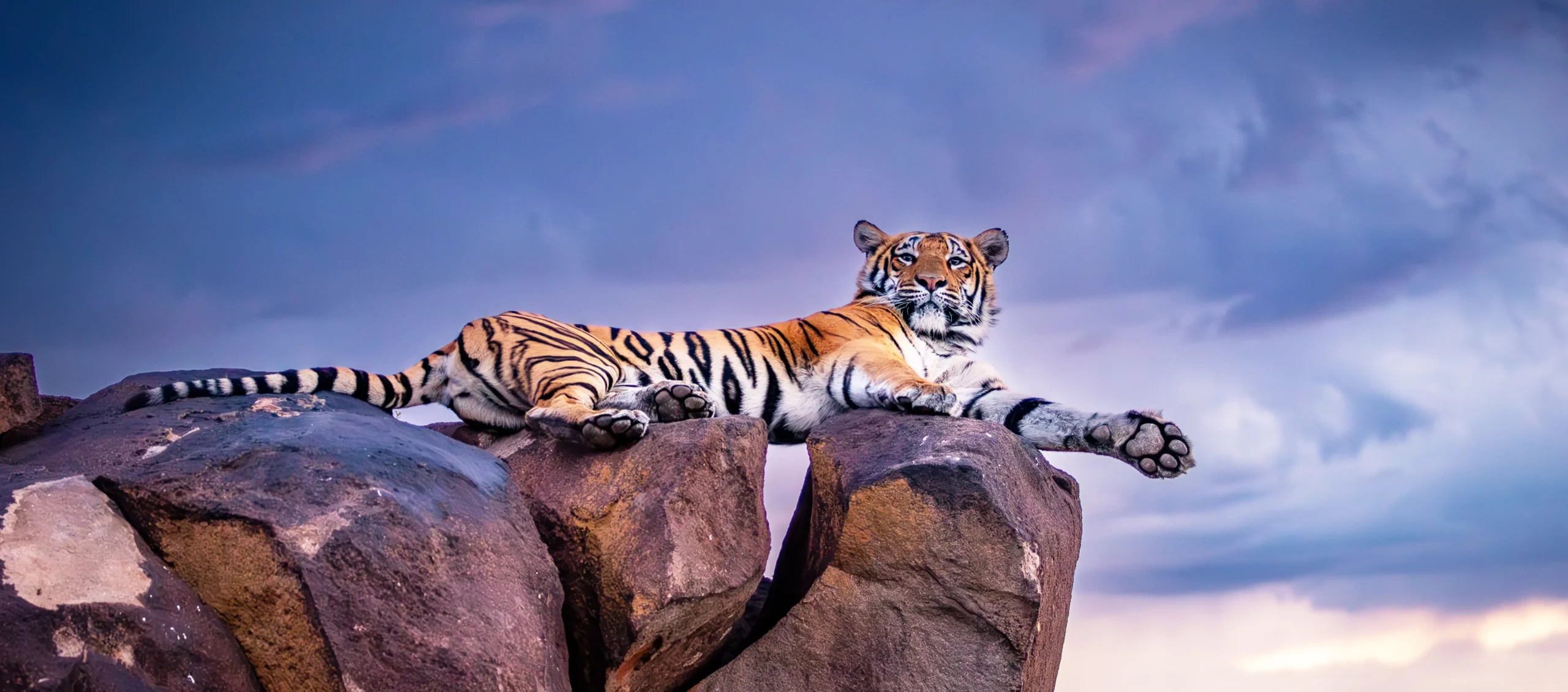
FAQ's
Is there guest accommodation at Kishindo?
Yes, we offer luxury accommodation with spectacular views at our Canyon Lodge. Visit our accommodation page for more information.
Can I book Kishindo for exclusive use?
Yes, Kishindo can be booked for exclusive use and is ideal for a family or small group of friends who want to enjoy the ultimate private and exclusive safari experience. Click here to enquire today.